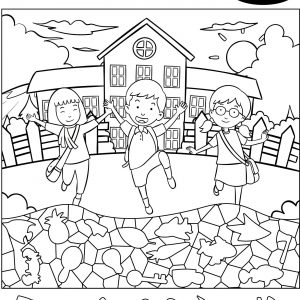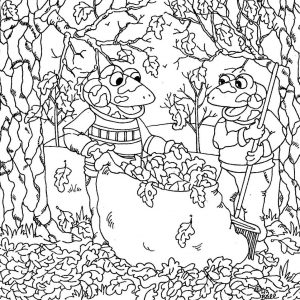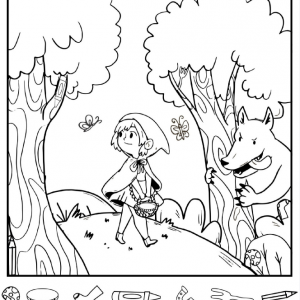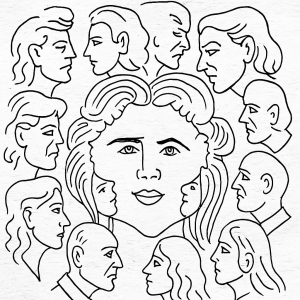The Tree of Faces: A Hidden Object Challenge That Reveals More Than Meets the Eye
At first glance, this mesmerizing image seems like a simple sketch of a tree. But look closer — much closer — and you’ll start to see something extraordinary. The tree’s branches and trunk are not just lines and curves; they form human faces, blending art and illusion in a way that challenges your perception. This “Tree of Faces” hidden object puzzle is more than a test of your eyesight — it’s an exploration of how our minds interpret complexity and meaning in the simplest of lines.
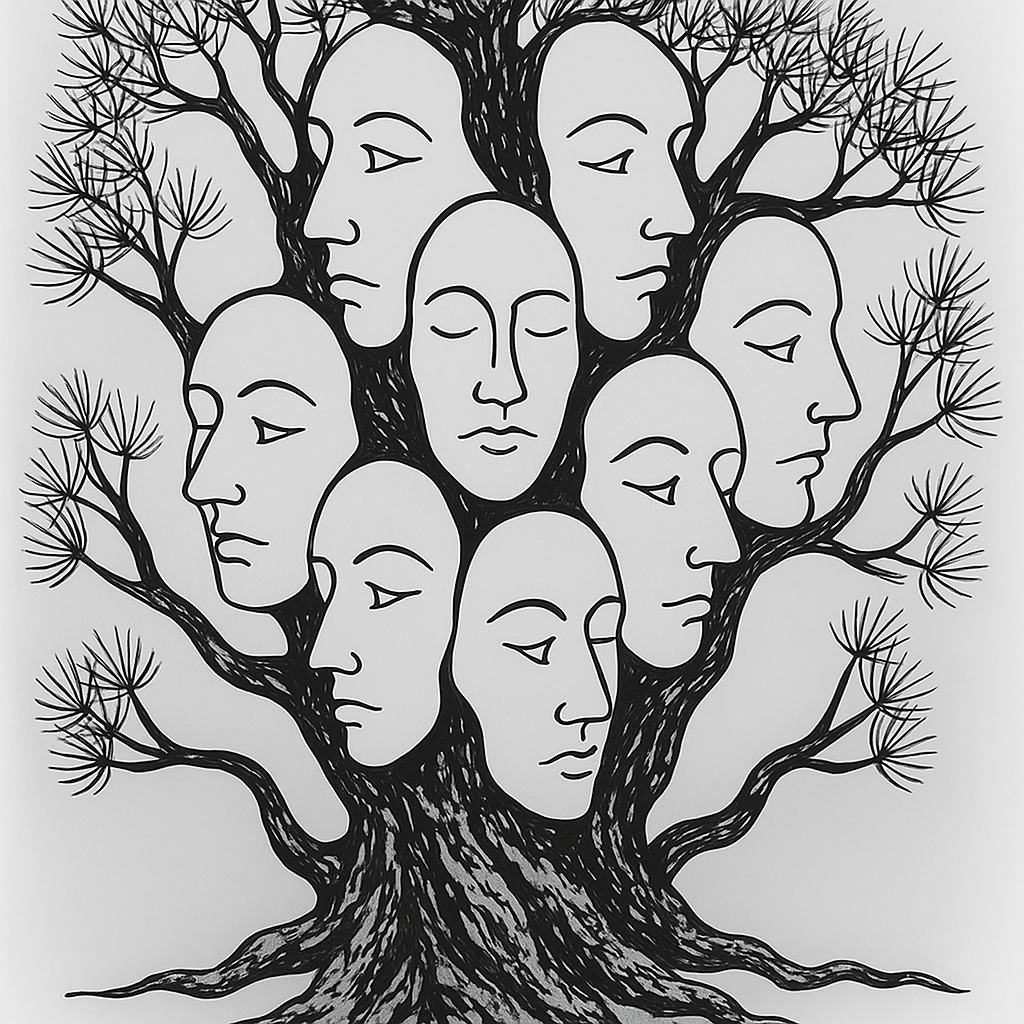
A First Look: The Illusion That Captures the Eye
The magic of this artwork lies in its deceptive simplicity. At first, your eyes take in the twisting branches, the flowing bark, and the quiet stillness of the scene. But then — you notice something. A face emerges from the trunk, another from the branches, and suddenly, the entire tree transforms into a collection of human expressions.
This is not just a drawing; it’s a conversation between perception and imagination. The artist plays with light, form, and structure to create an optical illusion that forces the viewer to look deeper, to question what they see, and to discover hidden meaning where they least expect it.
The Art of Hidden Faces: Why Our Brains Love the Challenge
Why do we love images like this so much? It all comes down to how our brains are wired. Humans are naturally drawn to patterns — especially faces. Scientists call this pareidolia, the tendency to see familiar shapes, such as faces, in random or abstract patterns.
When you look at this tree, your brain races to find order within chaos. The branches become outlines of cheeks, the bark turns into brows and lips, and soon, you can’t unsee the faces staring back at you. It’s a fascinating reminder of how perception shapes our world — we don’t just see what’s there, we see what we expect or want to find.

Counting the Faces: A Game of Observation and Focus
Now comes the challenge — how many faces can you spot in the tree? Some are clear and bold, staring directly at you, while others are subtle, hidden between lines and shadows. Each time you look, you might find another.
Most people initially notice about six or seven faces, but with careful observation, you can discover even more. The trick is to slow down your gaze. Let your eyes wander along the trunk, trace the roots, and explore every branch. This type of visual puzzle isn’t just about entertainment — it sharpens attention, enhances focus, and encourages mindfulness.
Think of it like meditation through observation. For a few moments, your mind becomes still, anchored entirely in the act of discovery.
The Symbolism Behind the Tree of Faces
Beyond its clever design, the “Tree of Faces” holds deep symbolic meaning. Trees have always represented growth, connection, and life. They remind us that everything in nature — including ourselves — is interwoven.
By merging human faces with the tree’s structure, the artist suggests that humanity and nature are inseparable. Each face could represent a generation, a memory, or a soul connected through time. The trunk symbolizes strength and unity, while the branches — spreading in all directions — represent individuality, diversity, and the flow of life.
In this way, the artwork becomes both a puzzle and a poetic metaphor for existence itself.

Why Hidden Object Art Inspires Curiosity and Calm
There’s a reason hidden object puzzles like this are loved by both kids and adults. They engage the eyes and the mind simultaneously, blending curiosity with calm concentration. The satisfaction of finding something hidden releases dopamine — the brain’s “reward chemical” — which gives us a small rush of happiness each time we uncover a new detail.
But beyond that, these puzzles offer a mindful escape from modern chaos. Instead of scrolling or multitasking, you’re fully immersed in a single, quiet activity. Each discovery feels like a tiny victory, and by the end, you’re not just entertained — you’re relaxed, recharged, and inspired.
It’s a gentle reminder that sometimes, slowing down and truly looking can be more rewarding than rushing through what’s in front of us.
The Connection Between Art and Emotion
Art like this doesn’t just challenge the eye — it speaks to emotion. The faces hidden within the tree are calm, introspective, even meditative. Their expressions mirror the mood the image evokes: serenity, unity, and quiet strength.
Perhaps that’s why so many people find this piece deeply moving. It’s not just about finding hidden faces; it’s about connecting to something universal — the shared humanity that lies within all living things. Each face seems to whisper a story, and together, they form a chorus of life and memory that transcends the page.

Bringing Hidden Object Art Into Everyday Life
What if we applied the same mindset this image inspires to our daily lives? How often do we rush past details, failing to see what’s right in front of us? Hidden object puzzles teach us patience and awareness — skills that extend far beyond the game itself.
Whether you’re observing art, spending time in nature, or simply watching people, the practice of seeing deeply changes your perspective. You begin to notice beauty in small things — the curve of a leaf, the texture of bark, the quiet expression on someone’s face. Like the “Tree of Faces,” life reveals its hidden wonders only when we take the time to look closely.
The Legacy of Optical Illusion Art
From Leonardo da Vinci’s double portraits to modern digital illusions, artists have long used hidden imagery to challenge perception. The “Tree of Faces” continues this legacy, blending creativity with psychology to make us question the boundary between what’s real and what’s imagined.
It’s an art form that never grows old because it speaks to something primal within us — our instinct to find meaning in mystery. Every viewer experiences it differently. Some see calmness, others see complexity. But all come away with a sense of awe at how simple lines can hold so much depth.
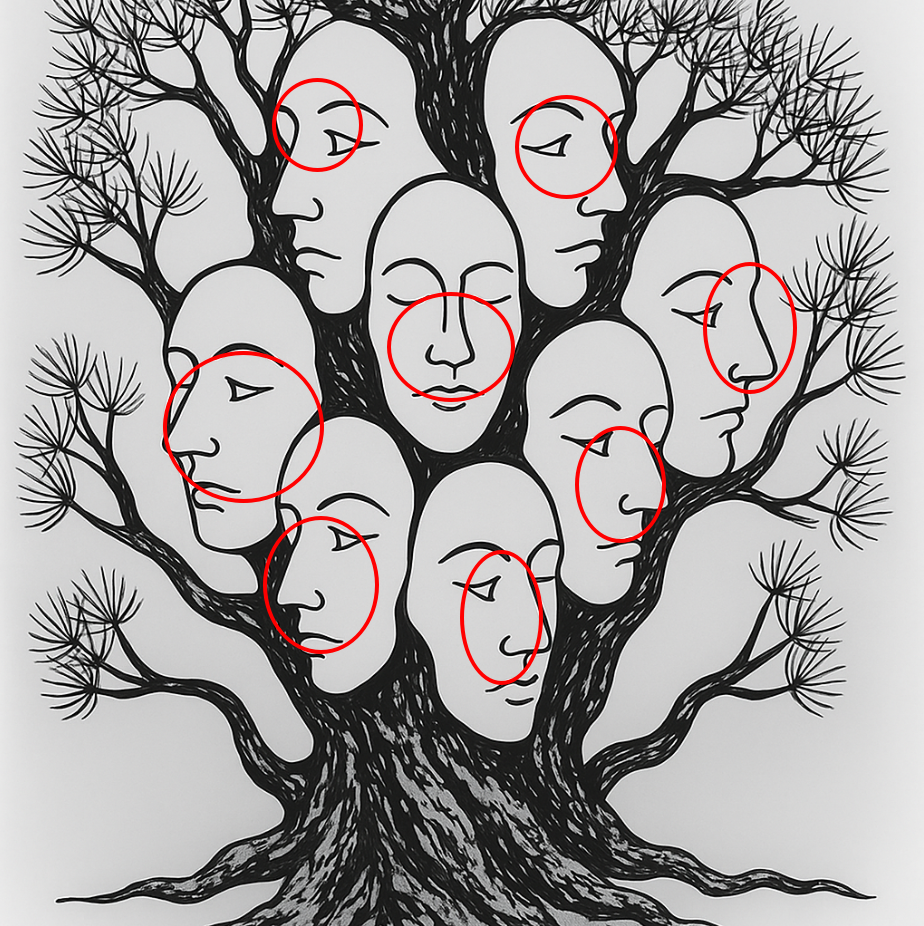
Conclusion: The Beauty Hidden in Plain Sight
The “Tree of Faces” is more than a hidden object puzzle — it’s a mirror of perception and a celebration of human connection. It reminds us that what we see depends on how we look. Beneath the surface of every branch, every pattern, every moment, lies something waiting to be discovered.
So the next time you find yourself gazing at an image, a forest, or even the faces of those around you, take a closer look. You might find more than you expected — because, just like this mysterious tree, life itself is full of hidden faces, waiting to be seen.
